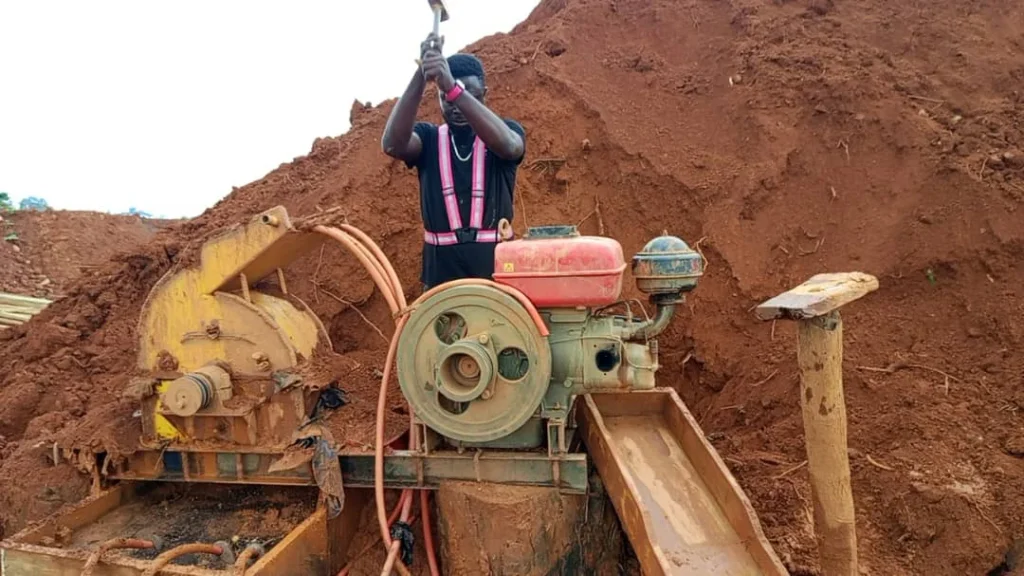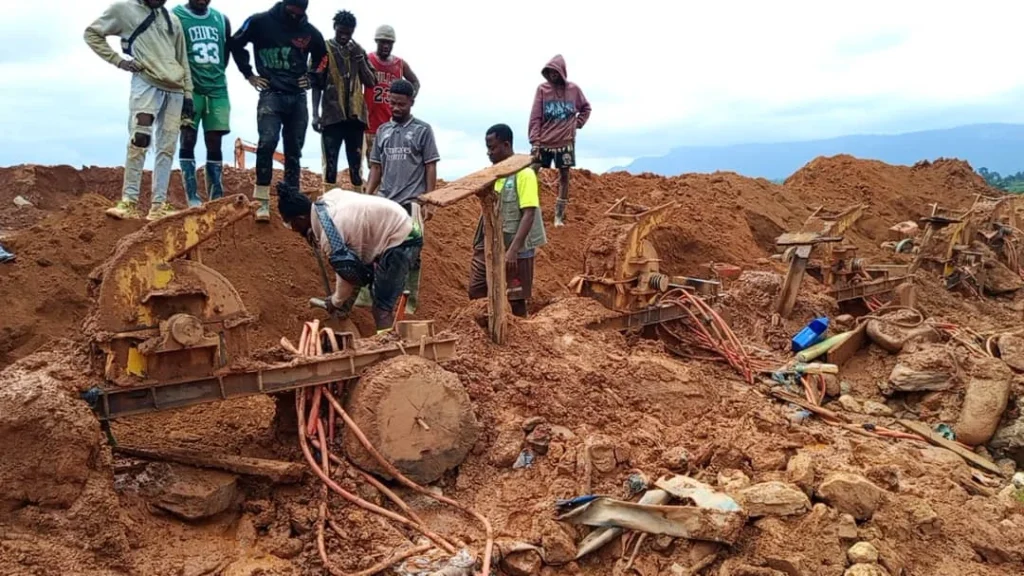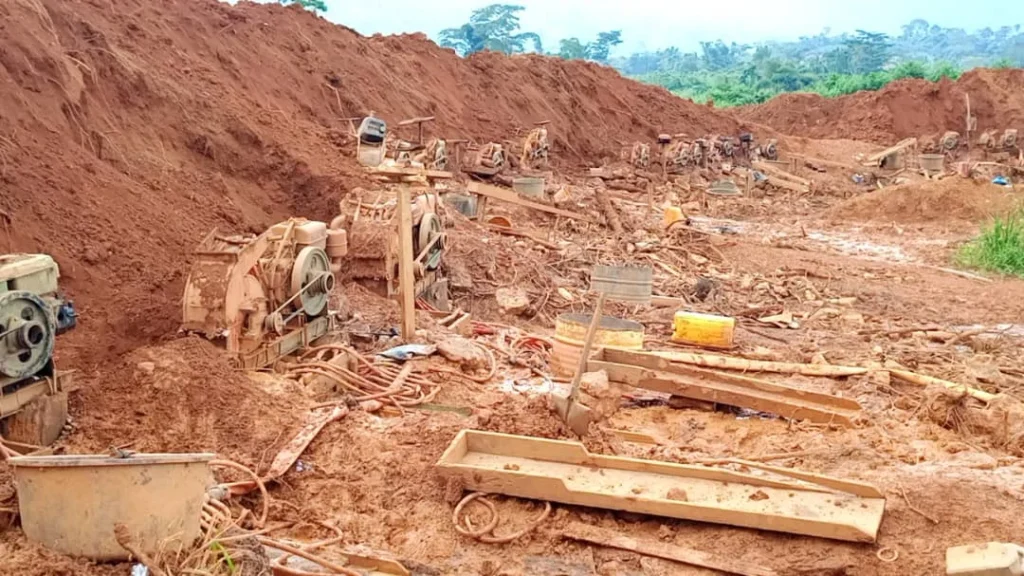A joint anti-illegal mining taskforce in Atiwa East has destroyed nearly one hundred galamsey machines, arrested two suspects, and vowed to intensify operations along the Birim River despite resistance from illegal miners and hostility from sections of the community.
The large-scale operation, which took place in the Eastern Region, marked one of the toughest raids in recent months against galamsey activities that continue to devastate water bodies and farmlands.
The taskforce, made up of military officers, police personnel, and local volunteers, carried out the destruction exercise under the directive of the Atiwa East District Chief Executive, Ernest Owusu Ntim.
According to the District Assembly, the operation was intended to dismantle entrenched galamsey sites at Ankaase and Anyinam, where miners had set up inland “chanfan” machines directly on the Birim River. The machines were being used to wash gold deposits straight into the river, leaving it polluted and discoloured while destroying the ecosystem that sustains farming and fishing livelihoods.
Officials said illegal miners had deployed close to one hundred machines along stretches of the Birim River. The taskforce destroyed all the equipment it found in order to halt operations and deter miners from returning to the sites. More than one hundred miners were seen fleeing as the team advanced.

“However, only two suspects were arrested due to the difficult terrain and the risk of drowning during the pursuit,” the District Assembly noted.
The two arrested suspects are in police custody at Anyinam and are expected to be arraigned before court in the coming days.
Resistance from Illegal Miners
At Ankaase, the taskforce came under direct attack from armed guards protecting miners. The incident sparked brief clashes, but military officers quickly neutralised the threat and restored order.
Taskforce leader, Sumaila Ahmed, disclosed that such resistance is not new and remains a major risk during anti-galamsey operations. He added that despite the destruction of machines, illegal miners often return to the same sites within weeks, making it difficult to sustain gains from operations.
“This is not the first crackdown, but the challenge is that they come back after equipment is destroyed,” Mr. Ahmed explained.

The taskforce also faces growing hostility from sections of communities where galamsey thrives. According to Mr. Ahmed, the lack of cooperation from locals undermines operations, with team members sometimes subjected to insults and threats.
He warned that without stronger collaboration from communities, the fight against illegal mining would remain difficult to win. The taskforce has therefore appealed for community members to support the mission to restore the Birim River, which continues to serve as a source of water for households and farmlands in the district.
Meanwhile, Alhassan Muniru, a local stakeholder, has urged the government to place an outright ban on the importation of “chanfan” machines and their spare parts. He argued that cutting off the supply of such equipment is essential to ending illegal mining activities.
The taskforce has vowed to maintain pressure on illegal miners operating in the Eastern Region and to prevent them from resuming their destructive activities. With directives from the District Chief Executive, the team intends to sustain operations across riverbanks and mining-prone communities.

Authorities insist that restoring the Birim River to its natural state remains a top priority, given its critical importance to both human consumption and agriculture in Atiwa East.
The destruction of nearly one hundred machines, while only part of a broader strategy, underscores the government’s renewed determination to confront galamsey.
READ ALSO: AVRATE, VRA Forge Stronger Partnership for Energy Sustainability at 2025 Congress



















